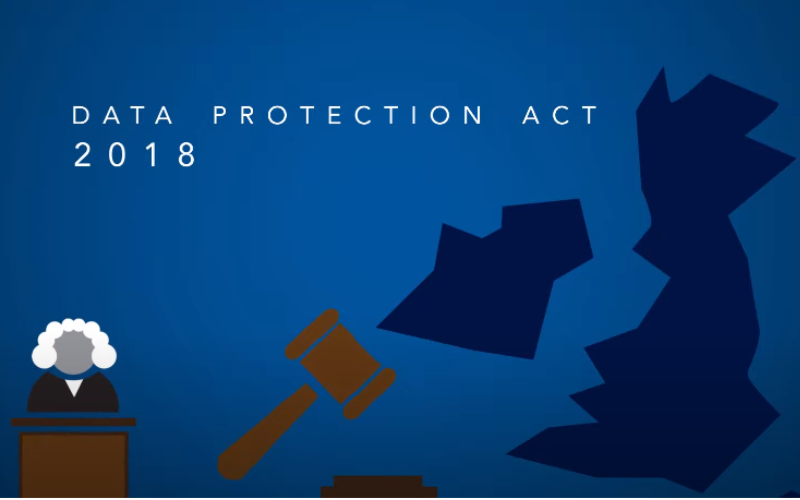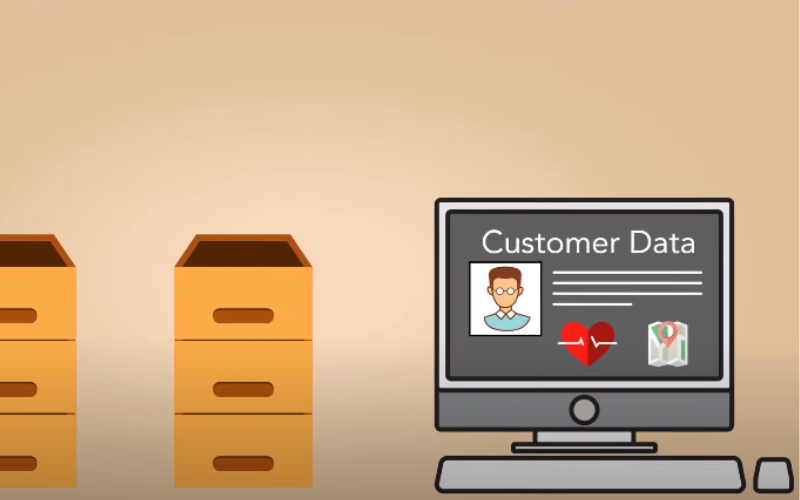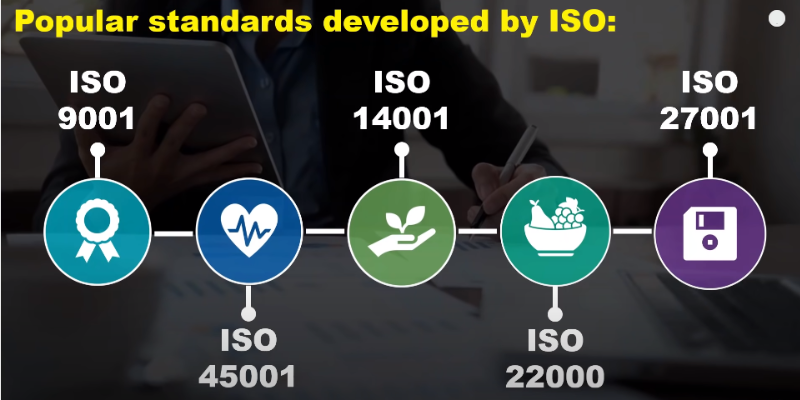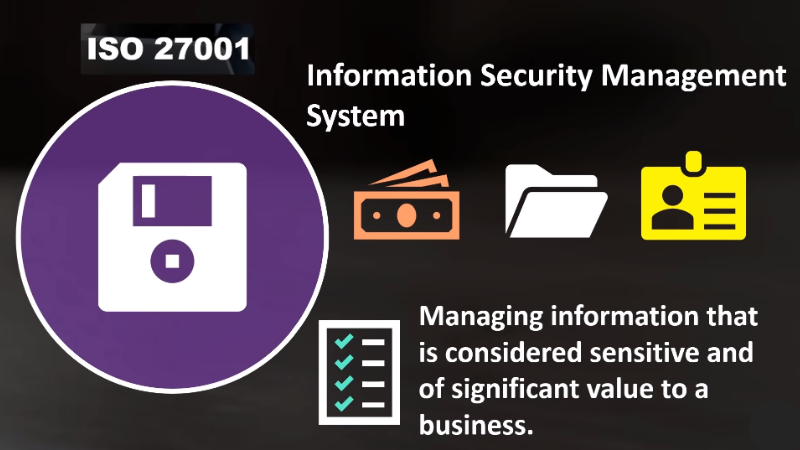Introduction
Data security refers to the practice of protecting digital information from unauthorized access, theft, or corruption. It involves various measures and techniques such as encryption, authentication, access control, and backup to ensure that data remains confidential, available and intact. Data security aims to mitigate the risks associated with cybercrime, which has become a growing threat in recent years.
In today’s world where businesses and individuals rely heavily on technology for their daily activities, data security has become more critical than ever before. With the increasing amount of sensitive information being stored online such as personal identification details, financial records or medical histories; cybersecurity breaches can have catastrophic consequences. These risks have led to the development of several data security standards that organizations must comply with including PCI DSS (Payment Card Industry Data Security Standard), HIPAA (Health Insurance Portability and Accountability Act), and ISO 27001 (International Organization for Standardization) among others.
Overview Of Data Security Standards
One of the primary objectives of data security standards is to ensure that organizations handle personal and sensitive data with care. These standards provide guidelines for implementing safe practices in handling, storing, and transmitting data. They also help ensure that companies are compliant with legal regulations on privacy and cybersecurity.
There are several data security standards available for organizations to adhere to. Some of the most common ones include the Payment Card Industry Data Security Standard (PCI DSS), General Data Protection Regulation (GDPR), Health Insurance Portability and Accountability Act (HIPAA), Federal Risk and Authorization Management Program (FedRAMP), and International Organization for Standardization (ISO) 27001. Each standard has its own set of requirements that organizations must meet.
Payment Card Industry Data Security Standard (PCI DSS)
Definition Of PCI DSS
PCI DSS stands for Payment Card Industry Data Security Standard. It is a set of security standards that any organization accepting payment via credit or debit card must implement. The standard was developed by the Payment Card Industry Security Standards Council to help prevent data breaches and protect sensitive information such as credit card numbers, expiration dates, and CVV codes.
Objectives Of PCI DSS
The PCI DSS has six main objectives that organizations must meet in order to be considered compliant with the standard. These objectives include building and maintaining a secure network, protecting cardholder data, maintaining a vulnerability management program, implementing strong access control measures, regularly monitoring and testing networks, and maintaining an information security policy.
Key Requirements Of PCI DSS
One of the key requirements is maintaining secure networks, which involves implementing and maintaining firewalls and regularly testing security systems.
Another requirement is protecting cardholder data, which includes encrypting all data transmissions over public networks and storing sensitive information in a secure manner. Physical security measures are also important under PCI DSS, requiring businesses to restrict access to cardholder data only to authorized personnel and ensuring physical access controls such as locks on doors and cabinets.
Compliance with PCI DSS is not optional for businesses that want to accept credit card payments securely. Failing to meet these standards can result in significant financial penalties as well as damage to a company’s reputation – making it essential for every organization that handles payment card information to prioritize compliance with these essential regulations.
Health Insurance Portability And Accountability Act (HIPAA)
Definition Of HIPAA

HIPAA, which stands for the Health Insurance Portability and Accountability Act, is a federal law that establishes national standards for protecting sensitive patient healthcare information. HIPAA applies to healthcare providers, health plans, and healthcare clearinghouses that handle protected health information (PHI). The law aims to protect the confidentiality, integrity, and availability of PHI by requiring covered entities to implement administrative, physical, and technical safeguards.
Objectives Of HIPAA
The primary objective of HIPAA is to ensure that all electronic personal health information (ePHI) is secure and protected from unauthorized access or disclosure. HIPAA requires healthcare organizations to implement technical safeguards such as encryption, firewalls, and password protection to prevent data breaches.
Another objective of HIPAA is to establish guidelines for maintaining privacy rights for patients’ medical records. Under HIPAA regulations, patients have the right to request access to their medical records, limit who can access their health information, and file complaints if they believe their privacy has been violated. This ensures that patients can trust healthcare providers with their sensitive health information without fear of it being misused.
Key Requirements Of HIPAA
HIPAA’s Security Rule sets out specific requirements for safeguarding electronic PHI (ePHI), including access controls, encryption and decryption methods, and audit controls to record activity within systems containing ePHI or audit logs themselves if they contain ePHI. In addition to these technical safeguards, HIPAA also requires administrative safeguards such as workforce training on data protection policies and procedures as well as regular risk assessments.
General Data Protection Regulation (GDPR)
Definition Of GDPR

The General Data Protection Regulation (GDPR) is an EU law that was implemented in May 2018. Its purpose is to regulate the processing of personal data of individuals within the European Union (EU) and provide them with more control over their data. The GDPR applies to any organization that collects, processes or stores the personal data of EU citizens, regardless of where the organization is based.
Under the GDPR, organizations must obtain explicit consent from individuals before collecting and using their personal data. They are also required to keep records of how they collect, store and use this data. If a breach occurs, organizations must report it within 72 hours and take steps to mitigate its impact.
Objectives Of GDPR

One of the primary objectives of GDPR is to give individuals greater control over their personal data, including how it is collected, processed, and used by organizations. This means that companies must obtain explicit consent from individuals before collecting or processing their data, and they must provide clear information on how the data will be used.
Another objective of GDPR is to establish a uniform set of rules for all EU member states regarding the protection of personal data. This ensures that businesses operating within the EU follow standardized practices when handling sensitive information.
Key Requirements Of GDPR
To comply with GDPR, organizations must ensure that they obtain explicit consent from individuals before collecting their personal data. They must also provide clear and concise privacy policies outlining how the collected data will be used and who it will be shared with. Additionally, organizations must implement appropriate technical and organizational measures to safeguard personal data from unauthorized access.
Moreover, under GDPR, individuals have the right to access their own personal data held by an organization at no cost. They can also request corrections to inaccurate or incomplete information as well as request the erasure of their information in certain situations. Failure to comply with GDPR can result in significant fines of up to €20 million or 4% of global annual revenue (whichever is higher).
Federal Risk And Authorization Management Program (FEDRAMP)
Definition Of FEDRAMP
FedRAMP, or the Federal Risk and Authorization Management Program, is a government-wide program that provides a standardized approach to security assessment, authorization, and continuous monitoring of cloud products and services. The program was established in 2011 to address the growing use of cloud computing by federal agencies and ensure that their data is secured from potential cyber threats. FedRAMP streamlines the process for federal agencies to evaluate cloud service providers (CSPs) by providing a standardized set of security requirements that must be met.
Objectives Of FEDRAMP
One of the key objectives of FedRAMP is to reduce duplication in security assessments. By creating a standardized framework for evaluating CSPs, FedRAMP eliminates the need for each agency to conduct its own individual risk assessment. This not only saves time but also ensures consistency in how security risks are evaluated across different federal agencies.
Another important objective of FedRAMP is to enhance transparency around cloud security. Through publicizing information about authorized CSPs and their compliance status, this program seeks to improve trust between CSPs and government agencies. Additionally, it provides a platform for sharing best practices across different organizations involved in securing sensitive government data stored in the cloud.
Key Requirements Of FEDRAMP
To achieve compliance with FedRAMP requirements, organizations must undergo rigorous security assessments conducted by accredited third-party assessors (3PAOs). The assessment process includes evaluating the IT system’s controls against established security standards such as NIST Special Publication 800-53 or ISO/IEC 27001. Additionally, organizations must adhere to strict rules surrounding data encryption and storage, access control management procedures, incident response planning and testing activities.
International Organization For Standardization (ISO)
Definition Of ISO

ISO, or the International Organization for Standardization, is a non-governmental organization that develops and publishes international standards. The ISO certification is a sign of quality assurance, indicating that an organization has met specific requirements to ensure the quality of its products or services.
ISO 27001 is a standard that provides guidelines for information security management systems (ISMS). It helps organizations establish and maintain an ISMS that ensures the confidentiality, integrity, and availability of their sensitive data.
The ISO/IEC 27701:2019 standard outlines privacy information management requirements for organizations handling personal data. It establishes controls to protect personally identifiable information (PII) in line with privacy regulations such as GDPR.
Objectives Of ISO
The objective of ISO is to standardize data security measures across different industries globally. Doing so helps organizations implement best practices in securing their systems from potential cyber threats. It also minimizes the risk of data breaches by establishing processes for identifying vulnerabilities in the system that could expose sensitive information. ISO also aims at helping businesses comply with legal requirements concerning privacy protection while ensuring they have adequate measures in place that help them avoid sanctions.
Key Requirements Of ISO

ISO 27001 specifies the requirements for an Information Security Management System (ISMS), which is a systematic approach to managing sensitive company information so that it remains secure. The standard requires companies to identify potential risks, establish policies and procedures to mitigate those risks and create an incident response plan in case of any breach.
ISO 27002 complements ISO 27001 by providing guidelines on how to implement the ISMS effectively. It covers best practices related to access control, system development, network security, business continuity planning, and more. Organizations that comply with both ISO 27001 and ISO 27002 can benefit from reduced risk of data breaches, improved customer trust, and compliance with legal regulations related to data privacy.
National Institute Of Standards And Technology (NIST)
Definition Of NIST
The National Institute of Standards and Technology (NIST) is a non-regulatory agency within the United States Department of Commerce that supports innovation and industrial competitiveness by advancing measurement science, standards, and technology. NIST develops standards, guidelines, and best practices for information security to ensure the confidentiality, integrity, and availability of sensitive information.
Objectives Of NIST
NIST provides cybersecurity guidance that helps organizations understand their risks and make sound decisions about protecting their IT systems. The NIST Cybersecurity Framework (CSF), for example, is a risk-based approach to managing cybersecurity risk that gives organizations a common language to communicate their risk management priorities internally and externally. The framework includes five core functions: Identity, Protect, Detect, Respond, and Recover.
Key Requirements Of NIST
One requirement is to establish a risk management framework that includes identifying potential risks and implementing safeguards to mitigate those risks. This involves conducting regular risk assessments and developing plans to address any identified vulnerabilities.
Another requirement is to implement multi-factor authentication (MFA) for all access points, including email accounts and remote logins. MFA adds an extra layer of security by requiring users to provide additional verification beyond just their password.
NIST recommends that organizations establish incident response plans in case of a data breach or other security incident. This involves having procedures in place for detecting and responding to incidents, as well as communicating with stakeholders such as customers or regulatory agencies.
Sarbanes-Oxley Act (SOX)
Definition Of SOX
SOX, or the Sarbanes-Oxley Act, is a U.S. federal law that was enacted in 2002 to improve transparency and accountability in corporate financial reporting. The act was introduced after several high-profile accounting scandals at companies such as Enron and WorldCom, which resulted in billions of dollars of losses for investors.
Objectives Of SOX
One of the main objectives of SOX is to establish a sound system of internal controls over financial reporting. This includes requiring management to assess the effectiveness of their internal controls annually and report any material weaknesses or deficiencies that may impact their financial reporting.
Another objective of SOX is to improve the quality and reliability of audit processes by establishing higher standards for auditors. Specifically, SOX requires auditors to be independent of the companies they audit; it also mandates that auditors evaluate management’s assessment of internal controls over financial reporting.
Key Requirements Of SOX
To comply with SOX, companies must meet several key requirements. They need to establish an auditing committee made up entirely of independent directors who can oversee financial reporting processes. They must perform an annual evaluation of their internal controls over financial reporting and report any material weaknesses or deficiencies found. They must retain all records related to audits for at least seven years.
Center For Internet Security (CIS)
Definition Of CIS
CIS or Center for Internet Security is a non-profit organization that provides cybersecurity solutions to its members. It was founded in the year 2000 and has since then been providing security expertise to organizations across various sectors. CIS offers several services such as threat intelligence, security assessment, and security controls.
Objectives Of CIS
CIS (Center for Internet Security) provide a comprehensive framework for securing IT systems and networks. This framework includes a set of best practices, also known as the Critical Security Controls, that organizations can use to protect their data from external and internal threats. Security experts develop the CIS benchmarks which are regularly updated based on emerging threats and vulnerabilities.
CIS also promote information sharing among organizations to improve overall cybersecurity posture. Through its membership program, CIS facilitates collaboration between public and private sector entities to share threat intelligence, best practices, and other resources related to cybersecurity.
Key Requirements Of CIS
Maintain a secure configuration. This means that all systems and devices must be configured securely and any vulnerabilities should be addressed promptly. Regular security assessments must also be conducted to ensure that the system remains secure.
Monitor and control access to sensitive data. This involves implementing strict access controls, such as multi-factor authentication, to prevent unauthorized access or use of sensitive information. It also requires regular monitoring and logging of all activities related to data access.
Comprehensive incident response plan in place. This includes procedures for detecting, analyzing, containing, eradicating, and recovering from security incidents. The plan should also provide clear guidelines on how to communicate with stakeholders during an incident and how to conduct post-incident analysis to prevent similar incidents from occurring in the future.
Cloud Security Alliance (CSA)
Definition Of CSA
CSA or Cloud Security Alliance is a non-profit organization that aims to promote best practices in securing cloud computing environments. The alliance provides education, research, and certifications to individuals and organizations worldwide.
CSA has developed a framework called the Cloud Controls Matrix (CCM) which outlines security controls necessary for secure cloud computing. The matrix helps organizations evaluate the security posture of their cloud service providers by providing a list of questions that they can use as a checklist. It covers various aspects such as compliance, data privacy, access control, vulnerability management, and incident management.
Objectives Of CSA
The main objective of CSA (Cloud Security Alliance) is to provide a comprehensive framework for securing cloud-based applications and services. The CSA works towards creating awareness among individuals and organizations about the potential risks associated with cloud computing, as well as best practices for mitigating these risks. This includes developing tools and resources that can be used by enterprises to secure their cloud environments.
Key Requirements Of CSA
Data security. Organizations must ensure that their data is secured at all times while in transit or at rest in the cloud environment. This includes encrypting sensitive information and ensuring that access controls are implemented to prevent unauthorized access.
Compliance with local regulations and industry standards. Organizations must ensure that they comply with all relevant laws, regulations, and standards such as GDPR, HIPAA, and PCI-DSS among others. This helps to ensure that customer data is protected in accordance with regulatory requirements.
Federal Information Security Management Act (FISMA)
Definition Of FISMA
The Federal Information Security Management Act (FISMA) is a US federal law that was enacted in 2002 to set minimum security standards for federal government information systems. It requires each federal agency to develop, implement, and maintain an agency-wide program to provide information security for the information and systems that support its operations and assets. FISMA mandates specific technology-neutral security requirements, such as risk assessments, periodic testing of system controls, and incident response planning.
Objectives Of FISMA
FISMA requires federal agencies to develop and implement an information security program that meets specific standards and guidelines outlined by the National Institute of Standards and Technology (NIST). This includes implementing security controls such as access control, incident response, and encryption measures.
FISMA mandates regular risk assessments to identify vulnerabilities in information systems. These risk assessments help organizations identify areas where additional security measures may be necessary or where existing controls need improvement.
FISMA requires agencies to ensure that all employees receive cybersecurity training to understand their role in protecting sensitive data. This includes awareness training about phishing scams, social engineering attacks, and other common threats that can compromise the confidentiality, integrity, or availability of critical data.
Key Requirements Of FISMA
Risk management. This involves identifying potential risks, assessing their likelihood and impact, and implementing appropriate controls to mitigate these risks. The goal is to ensure that sensitive information stays protected at all times.
Continuous monitoring. Organizations must continuously evaluate their information systems to identify and address any vulnerabilities or weaknesses in their security protocols. This helps to ensure that any potential cyber threats are detected and addressed before they can cause significant harm.
Frequently Asked Questions (FAQs)
Why Are Data Security Standards Important?
Data Security Standards are crucial for any business that values its operations and reputation. These standards provide guidelines on how to secure data from unauthorized access, theft, or damage. They help to identify potential threats and vulnerabilities in a system’s design, development, and deployment stages. Data Security Standards also provide best practices for securing data through encryption, user authentication, access controls, backup procedures, and disaster recovery strategies.
The importance of Data Security Standards cannot be overstated in today’s digital age where cyber-attacks are rampant. By following these standards, businesses can ensure that their sensitive information remains confidential while complying with regulatory requirements such as HIPAA and PCI DSS. Implementation of Data Security Standards also helps organizations build trust with their customers who entrust them with valuable personal data such as financial information.
How Can Data Security Standards Benefit My Organization?
Data security standards can provide your organization protection against data breaches. By complying with industry-standard security measures, you can reduce the risk of unauthorized access and protect sensitive information from falling into the wrong hands.
Implementing data security standards also increase customer trust and confidence. When consumers know that their personal information is being handled securely, they are more likely to do business with your organization over competitors who may not be as transparent about their security practices. Additionally, compliance with these standards demonstrates that your company takes data privacy seriously and values its customers’ trust.
What Are Some Consequences Of Failing To Comply With Data Security Standards?
A lack of data security measures leaves sensitive information vulnerable to cyberattacks, such as those involving malware or phishing scams. Such attacks can result in the theft of personal information, including usernames and passwords, financial details, and confidential business documents.
Failure to comply with data security standards can result in legal action against companies or organizations that handle sensitive information. This is especially true when dealing with consumer data; the General Data Protection Regulation (GDPR) mandates that companies that collect personal information from EU citizens must take appropriate measures to protect it. Infringement of these regulations can lead to hefty fines and severe reputational damage.
Failing to comply with data security standards can also lead to a loss of trust among customers and partners. Consumers are increasingly concerned about their privacy rights and expect companies they deal with online or offline to be responsible stewards of their personal information.
Conclusion
Data security is an essential aspect of any business or organization that deals with sensitive information. While there are numerous data security standards available, it is crucial to choose the ones that best suit your needs and comply with any regulatory requirements in your industry. The standards discussed in this guide provide a solid foundation for protecting your data from cyber threats and breaches.
